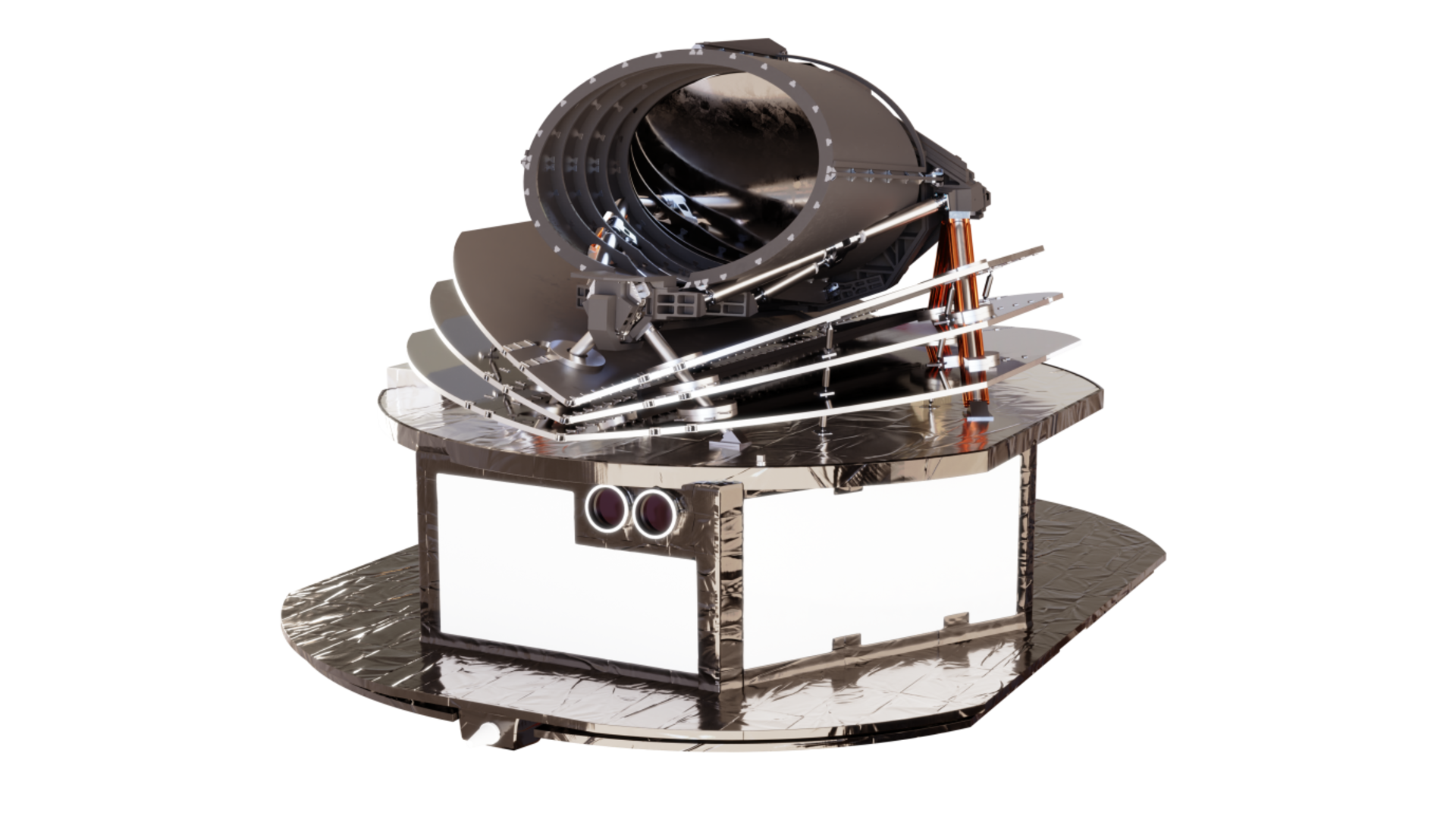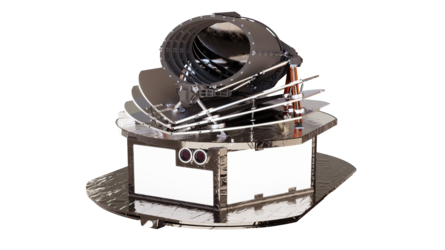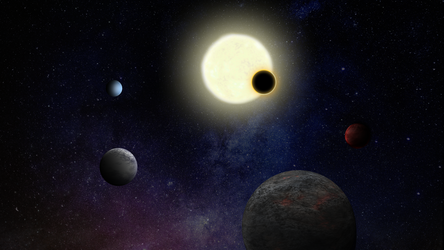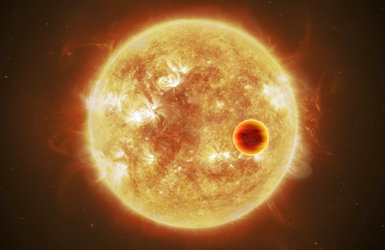Ariel factsheet
Overview of the Ariel mission
Name: Ariel (Atmospheric Remote-sensing Infrared Exoplanet Large-survey)
Planned launch: 2029
Mission theme: Performing a chemical census of a large and diverse sample of exoplanets by analysing their atmospheres.
Status: Ariel was selected as the fourth medium (‘M-class’) mission in ESA's Cosmic Vision 2015–25 plan in March 2018. It was adopted in November 2020 and is currently under development.

Mission objectives: Although astronomers have discovered many exoplanets in recent years, they still have not found a clear link between the characteristics of an exoplanet and those of its parent star. To do this, the study of exoplanets has to shift from 'discovering' towards 'studying and understanding'. A large-scale survey of exoplanets is required – Ariel's key objective is to perform such a survey.
Ariel will observe about 1000 exoplanets, ranging from rocky planets to gas giants. The mission will study the nature of these exoplanets, both as individuals and as populations. It will also monitor the activity of their host stars.
Using a variety of techniques, Ariel will detect signs of well-known ingredients in the planets’ atmospheres, including water vapour, carbon dioxide and methane. It will also detect exotic metallic compounds to decipher the overall chemical environment of the distant star system. For a few planets, Ariel will study their clouds and monitor variations in their atmospheres on both daily and seasonal timescales.
Ariel’s observations of these diverse worlds will provide insights into the early stages of the formation of planets and their atmospheres, and their evolution over time. This will contribute to our understanding of our own Solar System. The observations will also lay the groundwork for future searches for life elsewhere in the Universe and planets similar to Earth.
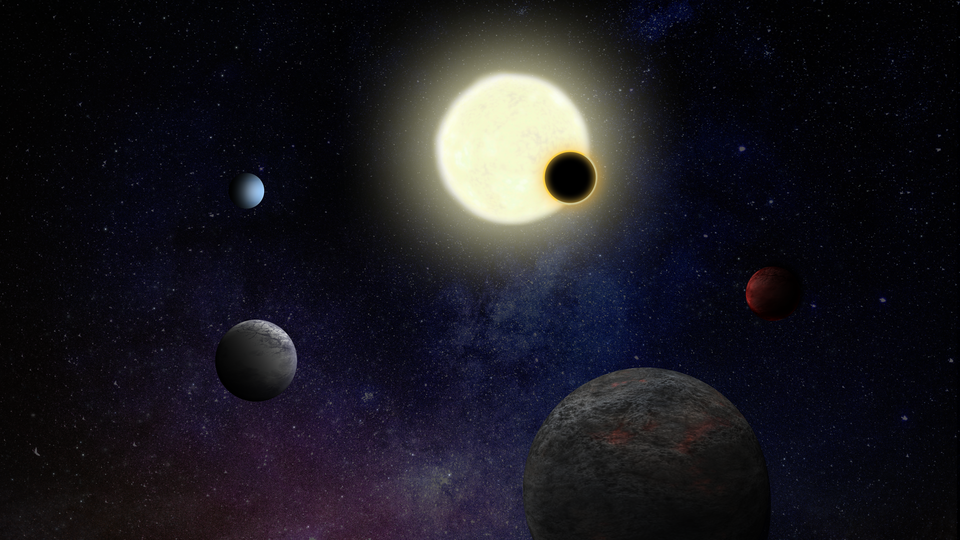
What’s special?: Ariel will study exoplanets as individuals, and as groups with similar characteristics – such as age, composition, and formation history – in much more detail than ever before. It is the first mission dedicated to measuring the chemical make-up and atmospheric temperature profiles of hundreds of exoplanets.
Ariel will also explore how an exoplanet’s host star shapes conditions on the planet itself. If we think about Earth, life is possible because we experience temperatures where water can remain liquid. If we were orbiting a bigger, hotter Sun, water would evaporate, and if we were orbiting a smaller, cooler Sun, it would freeze. Size and temperature are important, but so are wind and magnetic activity – stars with lots of magnetic activity can strip the atmospheres away from planets and bombard their surface with dangerous radiation.
By studying the relationship between exoplanets and their host stars, Ariel will fill a big gap in our knowledge of how a planet’s properties are linked to the environment in which it formed, or in other words, if and how the type of host star drives the physics and chemistry of the planet’s evolution.
Spacecraft and instruments: Ariel’s launch mass will be approximately 1400 kg. The spacecraft will include the following key parts:
- A Cassegrain reflector telescope consisting of two mirrors, followed by a third mirror to focus the light. The elliptical primary mirror will measure 1.1 by 0.7 metres.
- An infrared spectrometer called AIRS (Ariel medium-resolution InfraRed Spectrometer).
- A Fine Guidance System (FGS) module containing three visible to near-infrared photometer channels (two used as guidance sensors as well as for science) and a low-resolution near-infrared spectrometer.
Journey and orbit: Ariel is expected to launch on an Ariane 62, together with ESA’s Comet Interceptor mission. It’s final destination is the Sun-Earth Lagrange point 2 (L2), 1.5 million kilometres beyond Earth in the direction away from the Sun. From a halo orbit around L2, Ariel will cover the complete sky every three months, with some stars visible for more than 30% of the mission’s lifetime, depending on their position compared to Ariel’s orbit.
Lifetime: Nominal four-year operational timeline, with a potential extended science operations phase lasting a further two years.
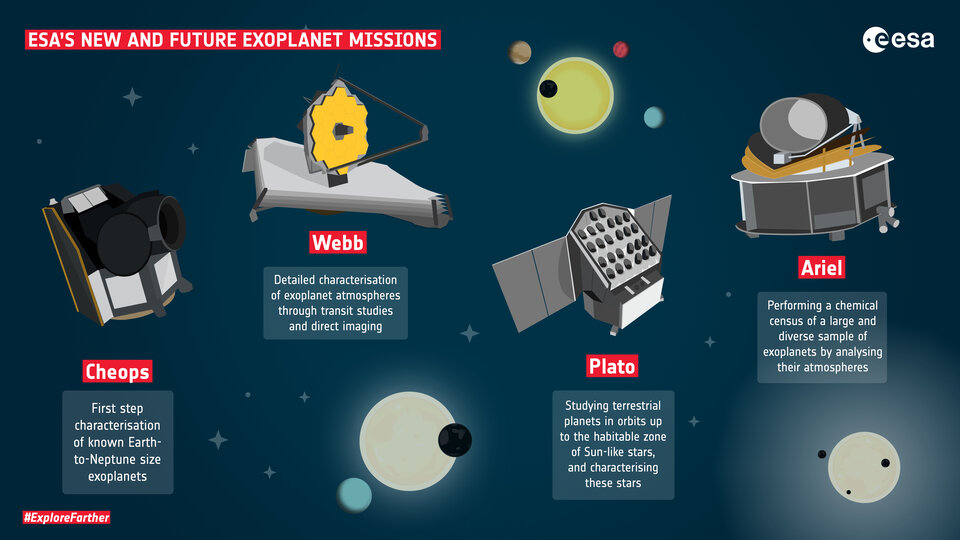
Legacy: Ariel complements several other exoplanet missions. It is the third in a trio of dedicated ESA missions focusing on various aspects of this rapidly evolving subject, following Cheops, which launched in 2019, and Plato, scheduled for launch in 2026.
Potential target exoplanets for Ariel will be identified and studied by a number of missions in the next decade, including Cheops and Plato, as well as ESA’s Gaia, NASA's TESS, and the NASA/ESA/CSA James Webb Space Telescope. However, Ariel is the only mission dedicated to performing a spectroscopic survey of a large, well-defined sample of exoplanets.
Partnership: Ariel is a collaboration between ESA and the Ariel Mission Consortium. Involving more than 50 institutes from 16 European countries, the Consortium will provide the mission’s payload module, including the reflector telescope and associated science instruments.
Meanwhile, Airbus will lead the European industrial consortium that is building the satellite and provide expertise and support to ESA and the Ariel Mission Consortium for the development of the payload module.
NASA and other space agencies are also contributing to the payload
ESA will provide the service module, the integration and testing of the spacecraft flight model, as well as being responsible for the launch and operations. After launch, operations will be conducted jointly by ESA and the Consortium.

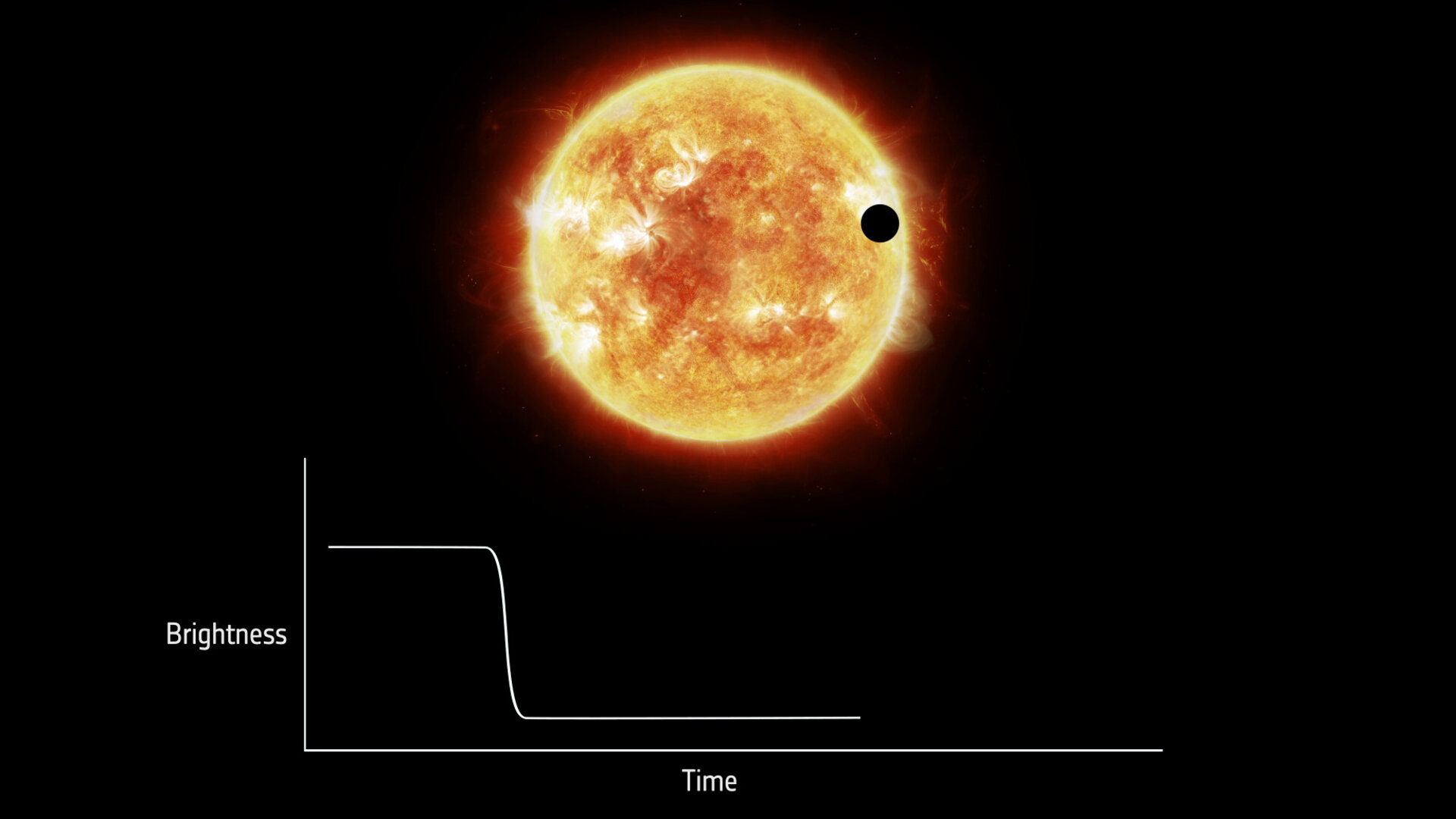
Access the video
Ariel mission facts
- Exploring the properties (e.g. chemical composition, temperature) and atmospheres (e.g. weather, thickness, pressure) of approximately 1000 transiting planets
- Focusing on warm and hot planets, ranging from super-Earths to gas giants
- Using both transit and eclipse spectroscopy (in near infrared wavelengths) and photometry (in visible wavelengths)
- Carrying out long-term observations of the same exoplanet system for a duration of between 10 hours and three days
- Observing the dimming of a host star by a planet with a precision of 10–100 parts per million relative to the star
- Consortium of over 50 institutes from 16 ESA Member States


